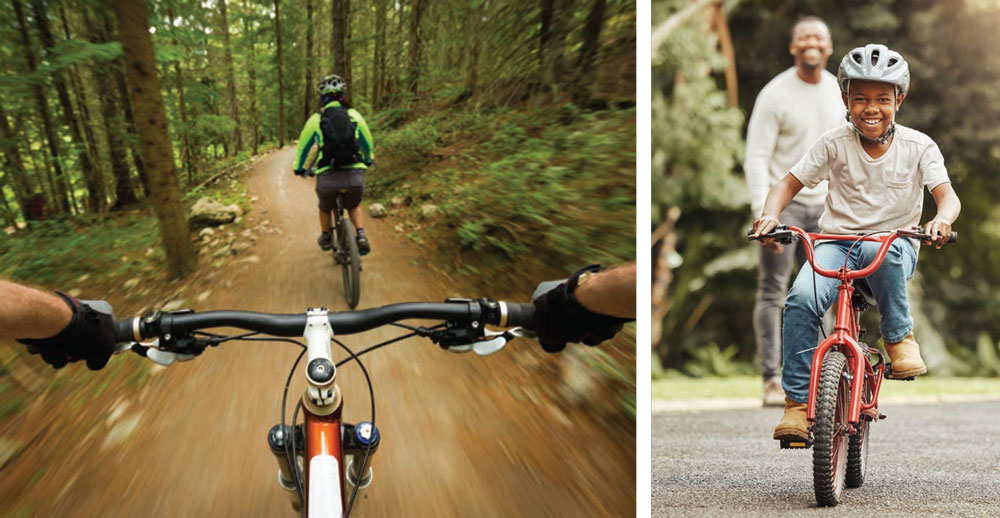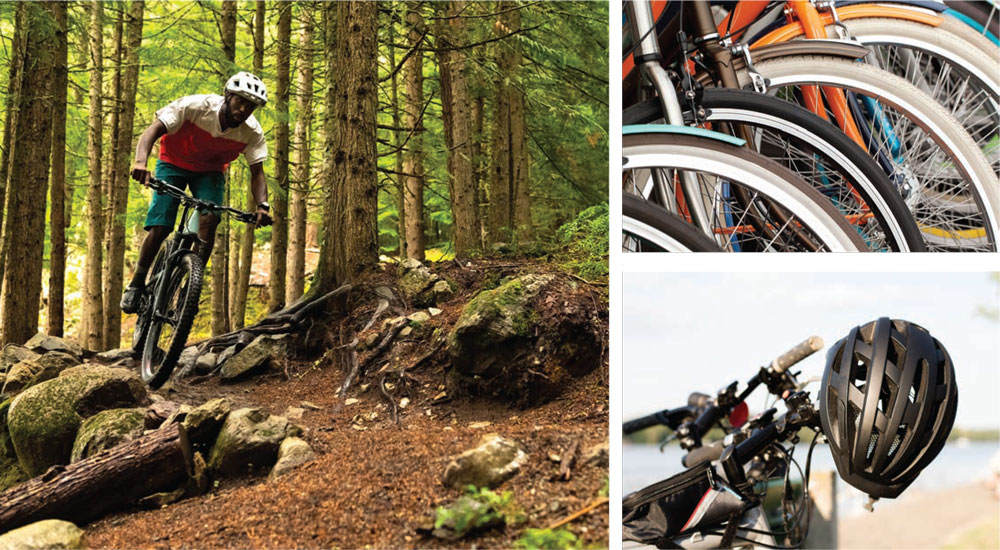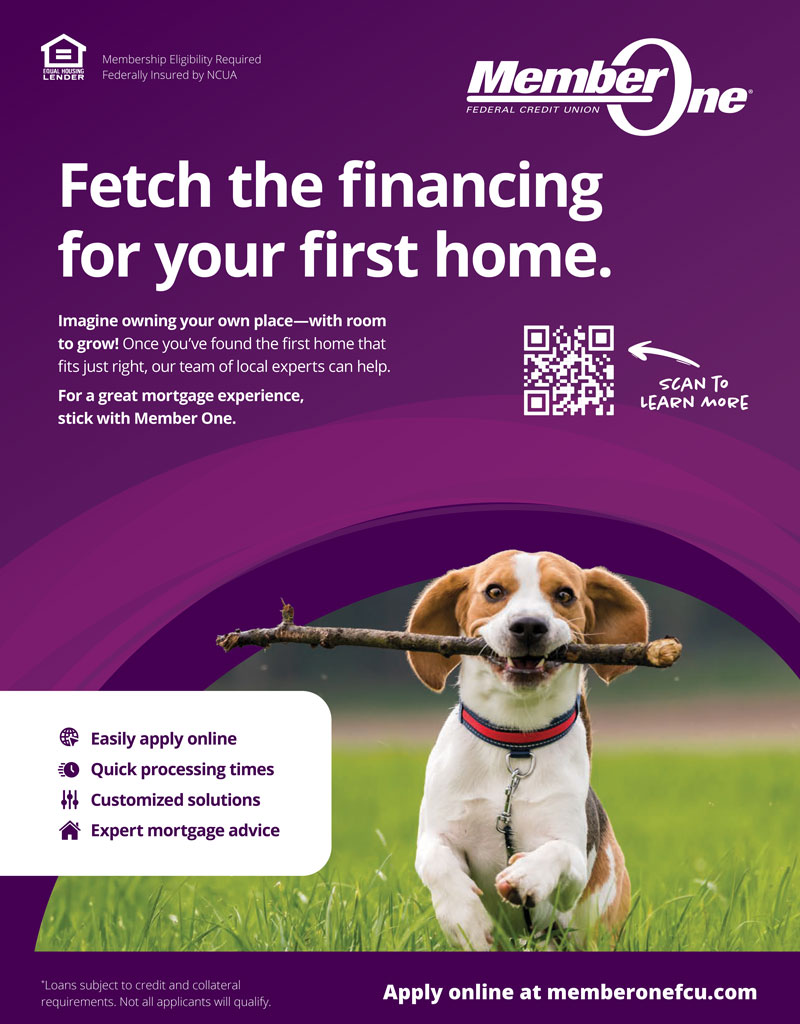JUST LIKE RIDING A BIKE
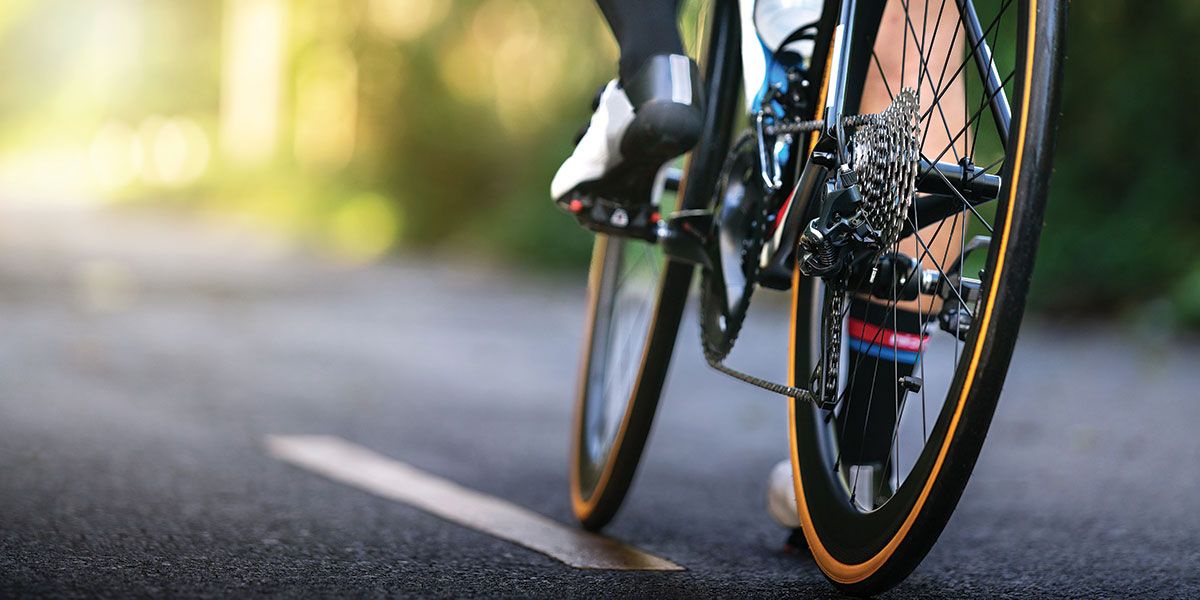
Discover (or Re-Discover) Cycling this Spring
As we age, it’s not always easy to embrace the well-known saying, “It’s just like riding a bike.” Especially when it comes to … riding a bike. It’s possible that one, two or even three decades have passed since you balanced on those two wheels.
But there is no reason to be intimidated. Cycling is actually considered one of the more accessible physical activities.
“Cycling is really for everyone. Children can learn to ride a balance bike as soon as they can walk, and adults can ride their entire life,” says Karen Mead of Cardinal Bicycle in Roanoke.
For those who are interested in the world of cycling and want to know how to get started, Mead helps us break down the basics.
Road vs. trail
First and foremost, you need to decide which type of cycling you want to pursue. Ask yourself a few questions:
- Do you want to ride on trails or on a flat surface/road?
- What’s available where you live?
- Which option makes you feel more comfortable?
Once you answer these questions, you can start doing your research on a bike.
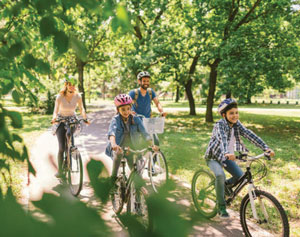 Pick a bike … but not just any bike
Pick a bike … but not just any bike
Newbies should understand that any bike is able to ride on the road — but a road-specific bike is going to be faster and more tailored to that environment.
The main visual difference is the tires. Mountain bike tires are wider, larger and have more pronounced tread to navigate uneven trail terrain. Road bike tires are more narrow, allowing beginner cyclists to maintain an average speed between 10 and 14 miles per hour.
While we all want to save a few pennies, Mead highly recommends buying a bike from a reputable bike shop, so you end up with a piece of equipment that’s the best fit for you.
“Your local bike shop also uses professional bike mechanics to assemble and maintain your bike. Big box stores do not have this level of service, and these bikes usually need a visit to your local shop to get them working properly, and in some cases to make them safe to ride,” says Mead.
If you go to a local bike shop, you can find a bike that’s the right frame size for your stature. Then, staff will adjust the seat height and other settings for you to make sure you are comfortable.
Mead says used bikes can be an option; they sell both at Cardinal Bicycle.
“A used bike will have already experienced some wear and tear,” Mead explains. “The used bikes we sell have been fully serviced, tuned up and are ready to ride. If you are buying a used bike from an individual, ask about the bike’s recent service history, or ask your bike shop to look at the bike before you buy it.”
Get in gear
The one essential piece of gear Mead says any cyclist needs is a helmet.
Virginia does not have a state-level bicycle helmet law but allows localities to set requirements by local ordinance. In the Roanoke Valley region, helmets are required in Roanoke, Salem, Blacksburg, Radford and Christiansburg.
“You should also have a way to carry water and a few basic repair tools to include a spare tube, an inflation tool and a multi tool,” she says, adding that even if you don’t know how to change a flat tire, it’s good to have this on hand when someone stops to help you.
For clothing, she says new riders should wear whatever they are comfortable in.
“As you ride more, the first piece of clothing that can really improve your comfort is a high-quality pair of bike shorts. Cycling-specific shoes can also dramatically improve comfort — even for short rides. Cycling shoes are much stiffer and provide better support when your feet are on the pedals,” she says.
Other gear suggestions are gloves, protective eyewear and padded shorts to help provide some cushion.
Rolling out
Beginner cyclists will want to tread lightly (no pun intended) and start out on an easy path or trail.
For road cyclists, Mead says a lot of new riders enjoy the Roanoke River Greenway.
“It’s flat and away from cars,” she says. “Cyclists on the Greenway should maintain a safe speed (not too fast), alert other riders when passing, and give enough space when passing other users. If you need to stop during your ride, pull off to the side so you do not block other trail users.”
The most popular places to mountain bike in the area include Mill Mountain and Carvins Cove.
Here are a few of Mead’s rules/best practices to keep in mind when mountain biking:
- Riders going downhill should yield to uphill riders.
- Cyclists should also yield to all other trail users, such as pedestrians and horses.
- Pedestrians will often yield to a cyclist. “When they do, be sure to slow down and thank them,” she says.
Whichever cycling path you take, Mead says if you stick with it, cycling can become a lifelong passion.
“Everyone will get something slightly different out of their cycling experience. Many riders value the community, sense of accomplishment, and ability to explore new places,” she says. “It can change your life.”
The Roanoke area offers numerous cycling clubs. Learn more at roanokeoutside.com/guides-and-gear/find-groups/biking-groups/ ✦
cycling, eyewear, gloves, helmet, low impact, mountain bike, padded shorts, road bike, sweat-wicking clothing
